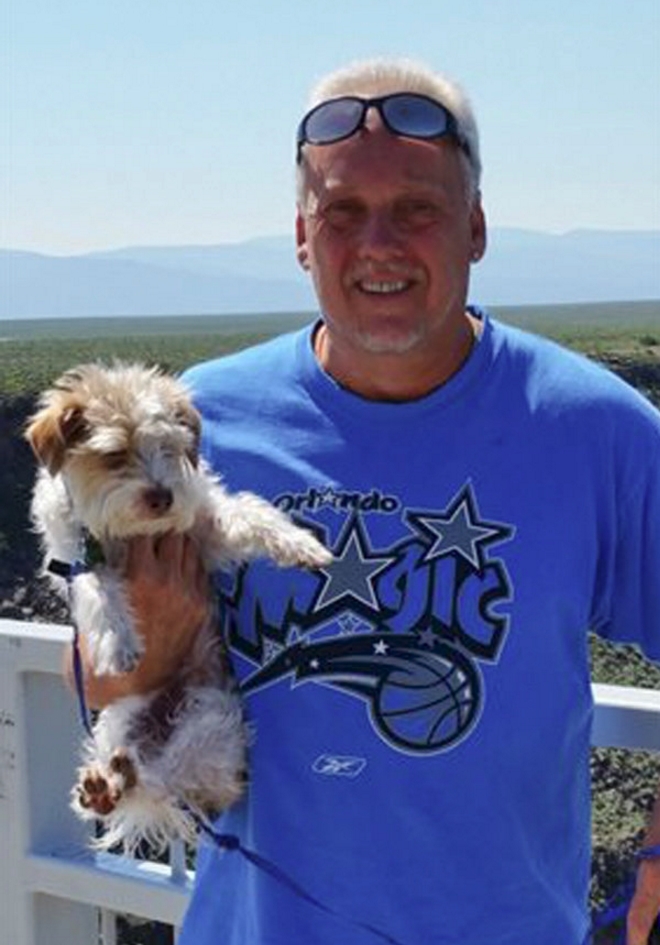
Randy Bilyeu was determined to find the treasure. And what a bounty it claimed to be. Forty-two pounds of coins, diamonds, rubies, jade carvings, sapphires, a frog figurine cast in Pre-Columbian gold and other loot stuffed in a bronze chest 10 inches wide and 5 inches tall. Estimates vary, but the total value of the box is in the ballpark of $1 million to $3 million.
Bilyeu knew the booty was hidden in Colorado. Or maybe it was New Mexico. But it was supposed to be somewhere along the Rio Grande River, in the mountains to the north of Santa Fe.
A millionaire and eccentric named Forrest Fenn hid the chest in 2010, when Fenn was 80. He had left a poem with clues. Occasionally he would reveal more nuggets of information, like when Fenn said the chest was at least 5,000 feet above sea level.
Having caught the Fenn treasure fever, Bilyeu moved to Colorado from Atlanta in 2014. He bought a raft, The Washington Post reported in January, to explore river systems in the area.
On Jan. 5, the 54-year-old Bilyeu embarked on such a reconnoitering trip. Bilyeu was alone except for his dog, Leo. He was equipped with wetsuit, waders and a GPS system, according to the Associated Press.
When 10 days passed without a word from Bilyeu, his ex-wife Linda Bilyeu filed a missing person’s report. Within 24 hours searchers had found his dog and raft. There was no sign of the treasure hunter.
“He liked the thrill of it,” his daughter said in an interview with “Inside Edition” at the time of Bilyeu’s disappearance. “He told me that it kind of connected to him spiritually.”
Fenn himself became involved. He purchased three days’ worth of helicopter flight time to look for the missing Bilyeu. Days passed, and officials halted their search. Volunteers continued on. There was no sign of Bilyeu.
Bilyeu seemed to have vanished into the hunt that consumed his life. And some six months later, officials confirmed the worst: Bilyeu had died in pursuit of Fenn’s treasure.
Santa Fe Police said on July 26 that Bilyeu’s remains were found in the Rio Grande, according to the AP. The cause of death was not reported. An investigation is ongoing.
If it were not for Fenn’s appearance on the “Today Show” in 2013, in all likelihood Bilyeu would never had heard of the treasure. Fenn, who had made a fortune as a dealer of antiquities, wrote an autobiography in 2010 called “The Thrill of the Chase.” In its most famous passage — a short poem — he sketches out where he hid the treasure. It was an idea he had been harboring since 1988, when Fenn was diagnosed with kidney cancer and given a grim prognosis.
The slim volume sold briskly, for a self-published autobiography about a pilot who found fortune as a treasure seeker and art dealer. The big draw, of course, was the loot. Fenn’s book accumulated something of a cult following. Would-be hunters flocked to online forums to dissect the poem, and flocked to the American West on treasure-hunting excursions.
“I’ve created a monster,” Fenn told Newsweek in 2012.
When he appeared on national television a year later, Fenn’s monster grew into a Godzilla-sized kaiju. Tens of thousands of people have gone looking for the treasure, NPR estimated. In the 2013 aftermath of the reports on the “Today Show” and NBC News, a Texas woman briefly went missing in the New Mexico wilds.
Fenn has been accused of falsifying the claim he hid any loot at all. Such negative attention would not upset his world view — Fenn is no stranger to controversy.
When he arrived in the Santa Fe area in the ’70s, Fenn began drumming up media hype about his wares. Locals grumbled about his approach, which struck them as atypically mercenary when dealing in ancient art.
“He’s a newcomer,” a long-time Santa Fean remarked to The Washington Post in 1982. “He has a cynical outlook toward art that isn’t appreciated by a lot of people here.”
Fenn, who by that point had been in Santa Fe for nine years, stood by his tactics. “You can lose money or break even, but if you make money you get a dirty name,” he told The Post at the time. “Artists and art dealers are supposed to be sacred.”
He also attracted federal attention. In 1986, after United States Forest Service and the Bureau of Land Management special agents raids on galleries in Colorado and Utah, Fenn told the New York Times: “The agents are assuming that the artifacts were taken illegally from public lands; I question their evidence.”
In 2009, another investigation led to confiscations of artifacts and computers from Fenn’s home. The dealer was adamant to the Los Angeles Times he had legally acquired the objects.
Even if Fenn placed the box, the matter of where he placed it could be controversial. He has indicated the treasure is not on private property. If it is buried in U.S.-owned soil, it would conceivably be a crime to remove the artifacts. (Fenn said it would not require digging to find the box.) The government could also make a convincing claim for antiquities found on federal property.
This possible stumbling point does not trouble the millionaire. “I own the government,” he told the Daily Beast in 2013. “I’m a taxpayer.”
Bilyeu’s ex-wife took Fenn to task in the Albuquerque Journal. “There’s no treasure – it’s not real. He lost his life for a hoax,” she told the Journal in an interview. “We’re disappointed that he lost his life because of a treasure hunt.”
Fenn did not respond to an emailed request for comment from The Washington Post. But he assured the Albuquerque Journal the chest exists.
“The treasure is real,” he said, “the story is real.”
Of Bilyeu’s death, Fenn called the event “very unfortunate, and I’m sorry.” He added: “I don’t know what to say. It’s terrible.”

